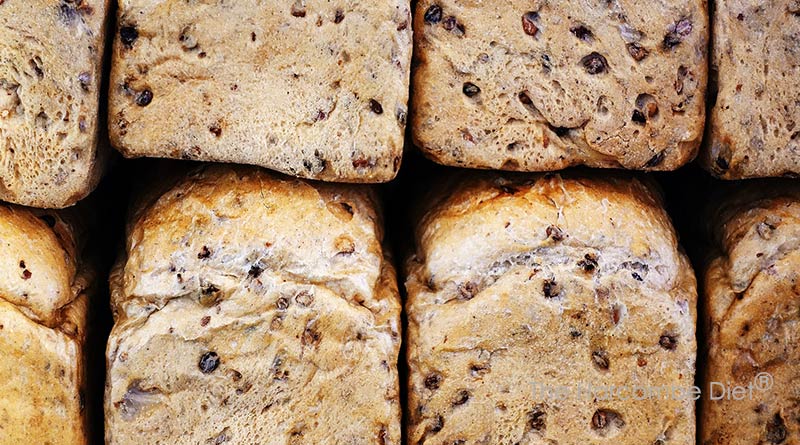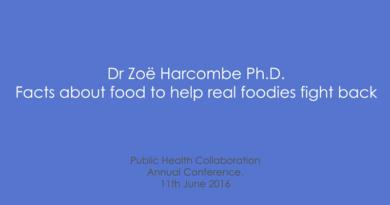Are ‘Healthy whole grains’ really that healthy?

This post is the logical follow-up to “The perfect five-a-day post“. In addition to being told to eat five-a-day, we are told to eat ‘healthy whole grains’. So let’s look at just how healthy these are – compared again to five genuinely nutritious foods.
Again, all information is openly available on this site. drawing from the United States Department of Agriculture’s National Nutrient Database for Standard Reference…
In the following two tables I have recorded:
– Essential fats (the term “essential” in nutrition means we must consume this substance – our body doesn’t make it);
– Complete protein (any food with a protein score over 100 provides complete protein – including the essential amino acids that we must consume. Any food with a protein score below 100 does not provide complete protein);
– 12 vitamins (the database doesn’t record biotin) and the main macro minerals and trace minerals. (Next to each vitamin and mineral is the US Recommended Dietary Allowance or “AI”, Adequate Intake, where an RDA is not given).
Table 1 has five foods that I would recommend as healthy – based on evidence of nutrient provision. Between them (and not always needing 100g for many nutrients to be acquired) they provide all the nutrients that humans need. Please note the nutrients that are most difficult to obtain. People should ideally consume 200g of oily fish each day to get close to the vitamin D and calcium requirements; the addition of steak to these five foods would be helpful to increase zinc intake.
Table 2 has the same information extracted for five example whole grains.
The yellow highlighter gives you a quick visual check of which food provides the most of each nutrient per 100g of product (across both tables). This is why I describe liver as the most nutritious food on the planet. Please let me know if you find a food with essential fats and complete protein, which is richer in vitamins and minerals than liver.
Table 1
| (All per 100g of product) | Chicken Liver | Sardines | Eggs | Sunflower seeds | Kale |
| Essential Fats – omega 3 (mg) | 6 | 1,480 | 74 | 74 | 180 |
| Essential Fats – omega 6 (mg) | 486 | 3,544 | 1,148 | 23,048 | 138 |
| Protein Quality (100+ = complete protein) | 149 | 148 | 136 | 88 | 92 |
| Vitamins | |||||
| A Retinol (900 mcg) | 3,290 | 32 | 139 | 0 | 0 |
| A Carotene (assumed retinol equivalent) | 6 | 0 | 1 | 3 | 769 |
| B1 (Thiamin) (1.2 mg) | 0.3 | 0.1 | 0.1 | 1.5 | 0.1 |
| B2 (Riboflavin) (1.3 mg) | 1.8 | 0.2 | 0.5 | 0.4 | 0.1 |
| B3 (Niacin) (16 mg) | 9.7 | 5.2 | 0.1 | 8.3 | 1 |
| B5 (Pantothenic Acid) (5 mg) (AI) | 6.2 | 0.6 | 1.4 | 1.1 | 0.1 |
| B6 (1.7 mg) | 0.9 | 0.2 | 0.1 | 1.3 | 0.3 |
| Folate (400 mcg) | 588 | 12 | 47 | 227 | 29 |
| B12 (2.4 mcg) | 16.6 | 8.9 | 1.3 | 0 | 0 |
| C (90 mg) | 17.9 | 0 | 0 | 1.4 | 120 |
| D (600 IU) (AI) (*) | neg | 272 | 35 | 0 | 0 |
| E (15 mg) | 0.7 | 2 | 1 | 33.2 | 0 |
| K (120 mcg) (AI) | 0 | 2.6 | 0.3 | 0 | 817 |
| Minerals (M) | |||||
| Calcium (1,000 mg) (AI) | 8 | 382 | 53 | 78 | 135 |
| Magnesium (420 mg) | 19 | 39 | 12 | 325 | 34 |
| Phosphorus (700 mg) | 297 | 490 | 191 | 660 | 56 |
| Minerals (T) | |||||
| Copper (0.9 mg) | 0.5 | 0.2 | 0.1 | 1.8 | 0.3 |
| Iron (18 mg) | 9.0 | 2.9 | 1.8 | 5.2 | 1.7 |
| Manganese (2.3 mg) (AI) | 0.3 | 0.1 | 0.0 | 1.9 | 0.8 |
| Selenium (55 mcg) | 54.6 | 52.7 | 31.7 | 53.0 | 0.9 |
| Zinc (11 mg) | 2.7 | 1.3 | 1.1 | 5.0 | 0.4 |
* Data for vitamin D is in IU’s – International Units. The USA has recently revised recommended vitamin D intakes to be 15 mcg per day (from 10 mcg per day). This is equivalent to 600 IU.
Table 2
| (All per 100g of product) | Wheat flour whole grain | Brown rice (long grain) | Wholewheat spaghetti/pasta | Oats | Whole wheat bread |
| Essential Fats – omega 3 (mg) | 38 | 44 | 27 | 100 | 25 |
| Essential Fats – omega 6 (mg) | 738 | 1,000 | 529 | 2,200 | 574 |
| Protein Quality (100+ = complete protein) | 54 | 75 | 43 | 95 | 22 |
| Vitamins | |||||
| A Retinol (900 mcg) | 0 | 0 | 0 | 0 | 0 |
| A Carotene (assumed retinol equivalent) | 0 | 0 | 0 | 0 | 0 |
| B1 (Thiamin) (1.2 mg) | 0.4 | 0.4 | 0.5 | 0.5 | 0.4 |
| B2 (Riboflavin) (1.3 mg) | 0.2 | 0.1 | 0.1 | 0.2 | 0.2 |
| B3 (Niacin) (16 mg) | 6.4 | 5.1 | 5.1 | 1.1 | 4.7 |
| B5 (Pantothenic Acid) (5 mg) (AI) | 1 | 1.5 | 1 | 1.1 | 0.7 |
| B6 (1.7 mg) | 0.3 | 0.5 | 0.2 | 0.1 | 0.2 |
| Folic Acid (Folate) (400 mcg) | 44 | 20 | 57 | 32 | 50 |
| B12 (2.4 mcg) | 0 | 0 | 0 | 0 | 0 |
| C (90 mg) | 0 | 0 | 0 | 0 | 0 |
| D (600IU) This = 15μg (AI) (*) | 0 | 0 | 0 | 0 | 0 |
| E (15 mg) | 0.8 | 1.2 | 0 | 0.4 | 0.5 |
| K (120 mcg) (AI) | 1.9 | 1.9 | 0 | 2 | 7.8 |
| Minerals (M) | |||||
| Calcium (1,000 mg) (AI) | 34 | 23 | 40 | 52 | 107 |
| Magnesium (420 mg) | 138 | 143 | 143 | 138 | 82 |
| Phosphorus (700 mg) | 346 | 333 | 258 | 410 | 202 |
| Minerals (T) | |||||
| Copper (0.9 mg) | 0.4 | 0.3 | 0.5 | 0.4 | 0.4 |
| Iron (18 mg) | 3.9 | 1.5 | 3.6 | 4.3 | 2.4 |
| Manganese (2.3 mg) (AI) | 3.8 | 3.7 | 3.1 | 3.6 | 2.1 |
| Selenium (55 mcg) | 70.7 | 23.4 | 73 | 28.9 | 40.4 |
| Zinc (11 mg) | 2.9 | 2 | 2.4 | 3.6 | 1.8 |
The whole grains have no complete protein; no vitamin A (retinol or carotene); no vitamin B12; no vitamin C; no vitamin D. Unlike with the 5 fruit & veg, this time there are two nutrients that are better provided for by 100g of a whole grain than the liver/sardines basket. Whole grain wheat flour wins for manganese and whole wheat spaghetti pasta wins for selenium. Neither nutrient is difficult to obtain from real food. These are also the only two examples where a nutrient RDA/AI can be provided by 100g of any of the whole grains. All other nutrients would require more than 100g of any of the five foods (in most cases many multiples of 100g) to meet an RDA/AI.
We would need to eat almost 1 kilogram of bread daily to get the calcium RDA (taking the best of the 5 whole grain sources of calcium). We would need to eat 340 grams of brown rice daily to get enough B6. We would need to eat 420 grams of oats daily to get our iron requirement.
There is another factor to consider with whole grains – their calorie content. People who know me know I don’t bother much with calories (more non-evidence based advice). However, calories from carbohydrates are important for a number of reasons: they are nutritionally inferior; they facilitate fat storage with insulin; they need to be used up as energy or they will be stored as glycogen/then fat; they can’t be used up for cell repair and the body requirements that fat/protein can satisfy and so on. It is thus important that 1,250 calories of brown rice would be needed for the B6 requirement (or 220 cals liver); 1,600 grams of oats for iron (or 230 cals liver) and c. 2,300 calories of bread for calcium (or 540 cals sardines).
If people listen to public health advisors and eat their ‘healthy whole grains’ instead of listening to granny and eating their liver, eggs and greens, populations will get fat and sick. And what has happened since we introduced this dietary advice?
So next time you hear the phrase ‘healthy whole grains’, your response should be – really?!

